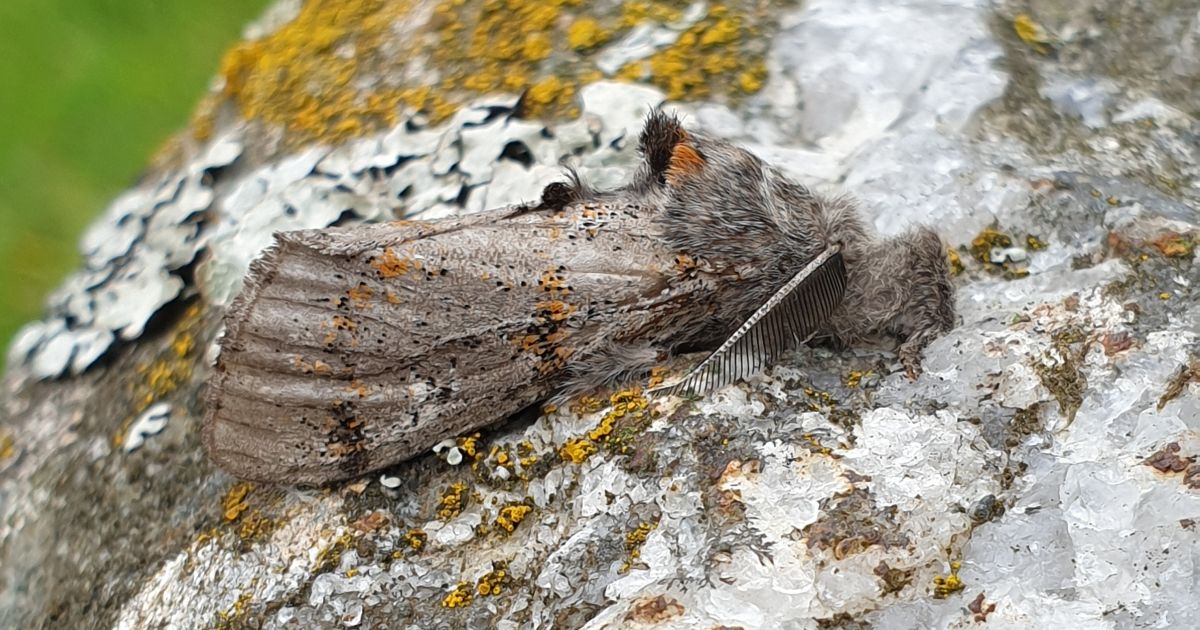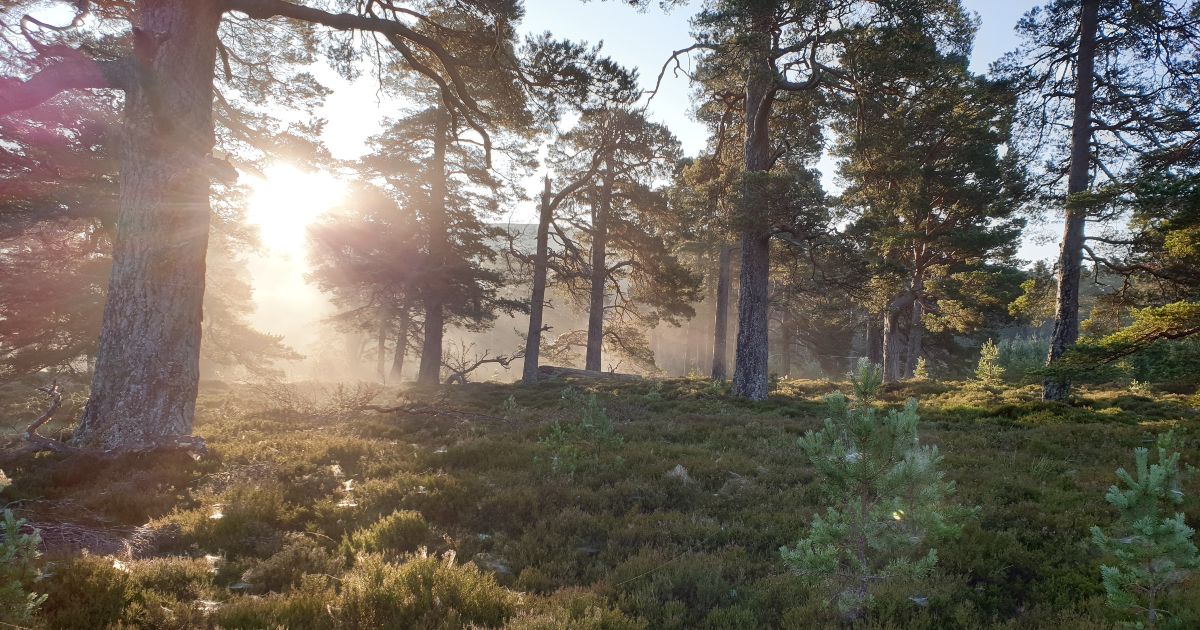Project to restore and expand Scotland’s ancient forests is boosting moth biodiversity
A new study, led by a University of Stirling researcher, for national charity Butterfly Conservation has assessed the impact of forest expansion on moth species.
/filters:format(webp)/filters:no_upscale()/prod01/cdn/media/stirling/news/news-centre/2025/oct-25/1200X630MothTraps.jpg)
A project to protect and restore ancient Caledonian forests in the Scottish Highlands is significantly boosting moth biodiversity, a new study led by a University of Stirling PhD student has found.
The National Trust for Scotland has been expanding the wooded area on its Mar Lodge Estate in the Cairngorms for 30 years by controlling deer numbers, allowing trees to naturally regenerate and establish.
Now, national charity Butterfly Conservation has published a study assessing the impacts this strategy has on moth species.
The results show that there were more moths, and a greater variety of species in the areas of restored woodland compared with open moorland, where deer numbers are higher. What’s more, young woodlands – which can grow in just 10 or 20 years – had a particularly diverse range of species.
Lead author Patrick Cook, a Senior Ecologist at Butterfly Conservation and PhD student at the University of Stirling's Faculty of Natural Sciences, said: "We are excited to announce the results of this study. The native woodland cover in the Scottish Highlands has been very low for centuries, and it is great to be able to show definitively that restoring and expanding these areas by letting them regenerate naturally can benefit biodiversity.
Vital role of moths
"Moths are wonderful insects in their own right, but they are also great environmental indicators: because they are valuable components of the natural environment in Scotland, for example as pollinators and as food for other animals, we know that if they are thriving they can be the basis for a healthy ecosystem."
Deforestation is a challenge that ecologists around the world have been trying to tackle for years.
In Scotland, due to historic tree felling, heavy browsing by deer, burning and climate change, two-thirds of ancient woodland have been lost since 1750. Native pinewood now covers less than 18,000 hectares in 84 small areas and an estimated 23 per cent of those are critically threatened.
 A dark tussock moth
A dark tussock moth
The main challenge is high numbers of Red Deer and grazing pressure by sheep: these animals eat young trees, including Scots pine saplings, so woodland fragments cannot naturally expand.
In the past, some landowners in Scotland have put up fences to keep hungry herbivores out of target zones to regenerate woodlands, but this time-consuming method can only benefit relatively small areas.
Now, land managers are increasingly using landscape-scale control of deer by targeted culling to reduce numbers to a level that allows natural tree regeneration.
The National Trust for Scotland has implemented this approach successfully across the eastern section of its Mar Lodge Estate in the heart of the Cairngorms: by controlling deer numbers in targeted areas around ancient pine forest, it has allowed several thousand hectares of woodland to re-establish in places from which it has been lost in the previous centuries.
Cook and a team of volunteers and Trust staff spent 12 nights in the summer of 2023 recording moth numbers in the areas of ancient forest, the new, younger woodland, and on the moorland, and the results were conclusive: the area with the highest abundance of moths was the mature woodland (1,502 moths), followed by the younger woodland (820), then moorland (654).
 Research took place in the Mar Lodge Estate in Western Aberdeenshire (Pic: Patrick Cook)
Research took place in the Mar Lodge Estate in Western Aberdeenshire (Pic: Patrick Cook)
This pattern was mirrored in the number of moth species recorded, with a total of 85 different species found in both the mature and young woodland, compared to only 55 on the moorland.
The most abundant moth species overall was the Ingrailed Clay (Diarsia mendica) which was more common in woodland, followed by the True Lover’s Knot (Lycophotia porphyria), which was slightly more common on moorland.
The team even found that some moths classed as moorland species benefited from the presence of woodland, which they say highlights how our understanding of species’ needs can change as degraded habitats are restored.
Findings can maximise biodiversity
Shaila Rao, the National Trust for Scotland’s Conservation Manager at the Mar Lodge Estate National Nature Reserve, said: “The Trust has been working hard to restore and expand the woodlands at Mar Lodge Estate. It is fantastic to see the results of this study reflecting the value of the woodland expansion for moth biodiversity. This gives us both confidence in our management but also clearly illustrates the value of having a mosaic of habitats in the upland landscape in Scotland to maximise biodiversity.”
Patrick added: "These results clearly show that woodland restoration can be a powerful tool to boost biodiversity - however it is vital to stress that we are not simply saying woodland is better than moorland, because many moths and numerous other plants and animals prefer open, exposed conditions.
"What we are saying is that, by controlling browsing by deer, we can create a fantastic mosaic of mature forest, young woodland and open moorland of the kind which existed across Scotland in the past, and restore the biodiversity of these wonderful Highland landscapes.”
The team concluded by saying that suitable deer control in the right areas could deliver a boost in biodiversity in just 10 or 20 years.
Landscape-scale native woodland habitat restoration using natural tree regeneration provides a biodiversity boost for moths in the uplands is published in the Journal of Ecological Solutions and Evidence.
UN Sustainable development goals
The University of Stirling is ranked among the top 200 institutions in the world for its contribution to meeting the United Nations Sustainable Development Goals (SDGs). The research or activity detailed above relates to the following SDGs.

